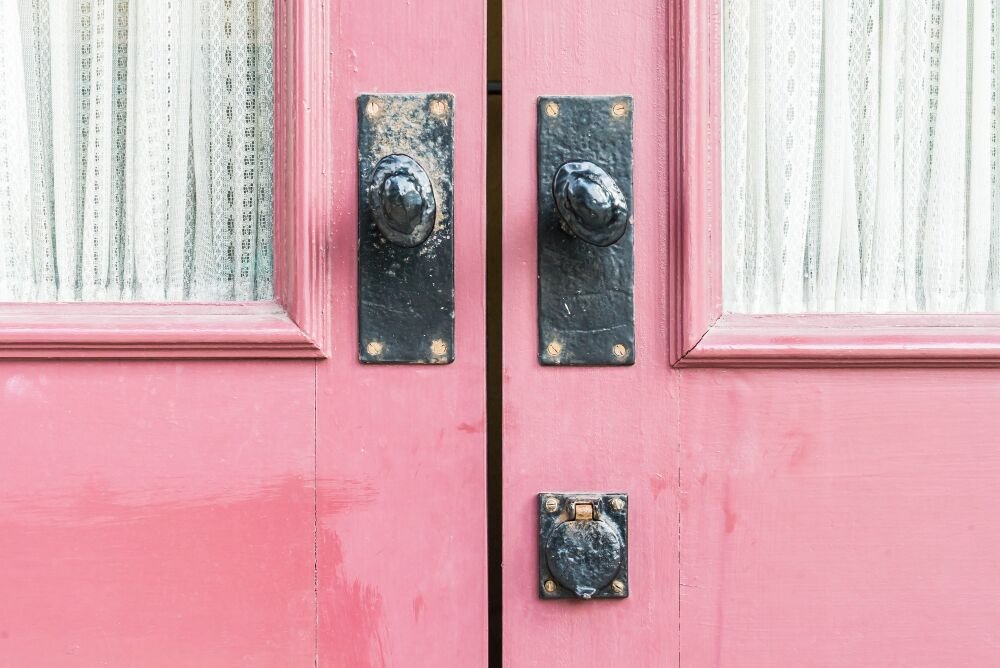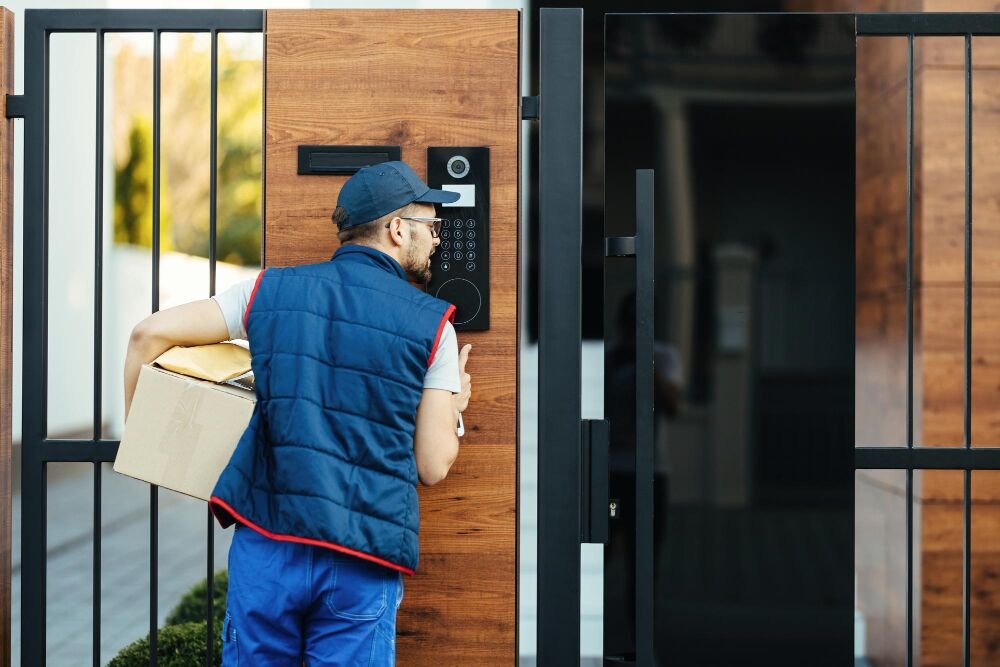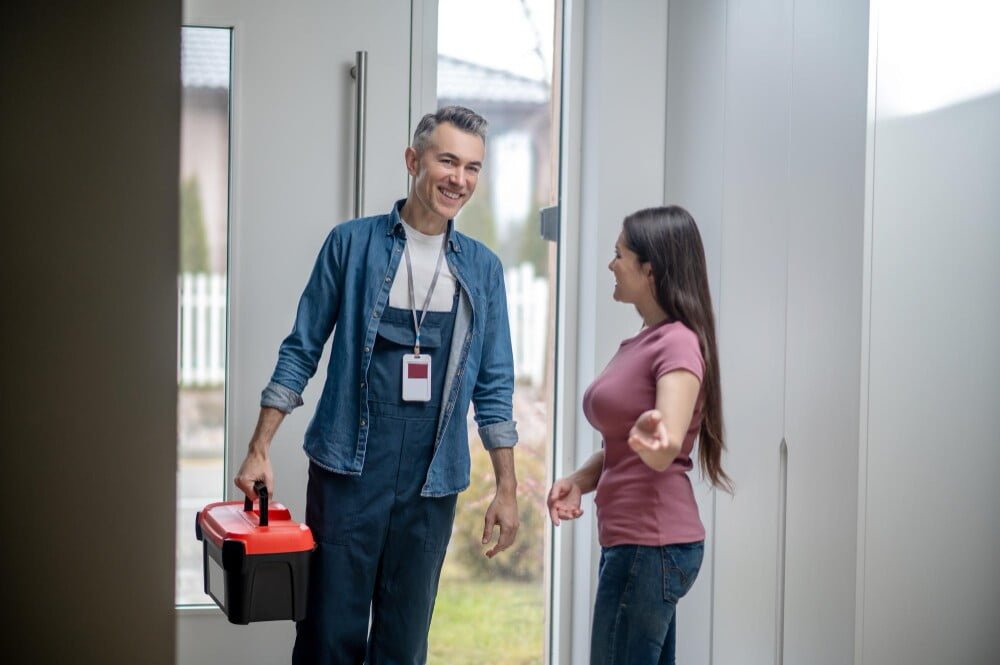Imagine walking up to your home’s entrance, only to be greeted by a battered and worn-out front door. Not only does it detract from the overall curb appeal, but it might also raise concerns about security and energy efficiency. If you’ve noticed any of the telltale signs that it’s time to replace your front door, it’s crucial to take action promptly. A new front door can breathe new life into your home’s exterior while providing peace of mind and potential cost savings.
In this comprehensive guide, we’ll delve into the five unmistakable signs that indicate it’s time to replace your front door. By recognizing these red flags early on, you can ensure your home remains secure, energy-efficient, and visually appealing.
Replace Front Door Signs
The front door is often the first thing visitors notice about your home, setting the tone for the entire property’s appearance. Beyond its aesthetic appeal, a well-functioning front door plays a crucial role in protecting your home from intruders, insulating against energy loss, and ensuring your family’s safety and comfort.
However, like any other component of a house, front doors can deteriorate over time due to various factors, such as weather exposure, wear and tear, and age. Ignoring the signs that your front door needs replacement can not only compromise your home’s security and energy efficiency but also detract from its overall value and curb appeal.
| Key Takeaway | Description |
|---|---|
| Visible Damage | Cracks, dents, warping, or other visible damage can compromise the structural integrity, security, and energy efficiency of your front door. Address these issues promptly. |
| Operational Issues | Difficulty in opening or closing the front door can indicate underlying problems like misalignment, swelling, or worn-out hardware. A smooth operation is essential for convenience and safety. |
| Energy Loss | Drafts, air leaks, or unexpected spikes in energy bills could signify poor insulation and weatherproofing around your front door, leading to energy loss and higher utility costs. |
| Outdated Appearance | A faded, peeling, or outdated front door can detract from your home’s curb appeal and perceived value. Replacing it with a modern, stylish option can instantly elevate the exterior aesthetic. |
| Security Concerns | Ineffective locks, structural weaknesses, or lack of reinforcement can make your front door vulnerable to potential break-ins, putting your family’s safety and belongings at risk. |
| Regular Maintenance | Conducting regular inspections and maintenance can extend the lifespan of your front door, but when multiple signs arise, it’s time to consider a replacement. |
| Improved Home Value | Investing in a new, high-quality front door can enhance your home’s security, energy efficiency, and overall value, making it a worthwhile investment. |
As a homeowner, it’s essential to be vigilant for these telltale signs and address them promptly to maintain the integrity and beauty of your home’s entrance.
Sign 1: Visible Damage
One of the most obvious signs that it’s time to replace your front door is visible damage, such as cracks, dents, or warping. These issues can arise from various causes, including extreme weather conditions, accidental impacts, or simply the natural aging process of the door material.

Cracks or dents in the door’s surface can weaken its structural integrity, making it easier for intruders to gain entry. Additionally, warping or misalignment can create gaps that allow drafts and moisture to seep in, leading to energy loss and potential water damage.
If you notice any visible damage to your front door, it’s crucial to address the issue promptly. Ignoring these signs can compromise your home’s security and energy efficiency, potentially leading to higher utility bills and increased risk of break-ins.
Sign 2: Difficulty in Opening or Closing
A smooth and effortless operation is a hallmark of a well-functioning front door. However, if you find yourself struggling to open or close your front door, it could be a sign of underlying issues that require immediate attention.
Difficulty opening or closing the door can be caused by various factors, such as:
- Misalignment due to settling or shifting of the home’s foundation
- Swelling of the door or frame caused by moisture exposure
- Worn-out hinges or hardware that need replacement
Not only is a stubborn door inconvenient, but it can also pose a safety risk, particularly in emergency situations where a quick exit is necessary. Furthermore, the added pressure and force required to operate the door can lead to further damage, exacerbating the problem over time.

If you find yourself wrestling with your front door on a regular basis, it’s a clear sign that it’s time to replace your front door for improved functionality and safety.
Sign 3: Drafts and Energy Loss
Another telltale sign that it’s time to replace your front door is the presence of drafts or noticeable energy loss around the door area. This issue can stem from various factors, such as poor insulation, gaps or cracks in the door or frame, or outdated weatherstripping.
When drafts occur, heated or cooled air from inside your home can escape, leading to increased energy consumption and higher utility bills. Conversely, outside air can seep in, making it harder to maintain a comfortable temperature inside your home.

To determine if your front door is contributing to energy loss, conduct a simple test:
- Feel around the door frame for any drafts or cool spots.
- Observe your energy bills for unexplained spikes or increases.
- Check for condensation or frost buildup around the door, indicating air leakage.
If you notice any of these signs, it’s a clear indication that your front door’s insulation and weatherproofing capabilities have been compromised, and a replacement is necessary to restore your home’s energy efficiency and comfort levels.
Sign 4: Outdated Appearance
While the functional aspects of a front door are crucial, its appearance also plays a significant role in enhancing your home’s curb appeal. An outdated or worn-out front door can detract from the overall aesthetic appeal of your property, potentially impacting its perceived value.

Signs that your front door’s appearance needs updating include:
- Faded or peeling paint or finishes
- Outdated or mismatched styles compared to the rest of your home’s architecture
- Visible wear and tear, such as scratches, dents, or discoloration
Not only does an outdated front door make a poor first impression on visitors and potential buyers, but it can also negatively impact your own sense of pride in your home’s appearance.
By replacing your front door with a modern, stylish option that complements the architectural style of your home, you can instantly elevate the visual appeal of your property’s exterior. A well-chosen front door can serve as a focal point, adding character and enhancing the overall curb appeal of your home.
Sign 5: Security Concerns
One of the most critical signs that it’s time to replace your front door is when it begins to pose security risks for you and your family. A compromised front door can leave your home vulnerable to potential intruders, putting your safety and belongings at risk.

Security concerns that may warrant a front door replacement include:
- Ineffective or outdated locking mechanisms that can be easily bypassed
- Structural weaknesses or damage that make the door easier to breach
- Lack of reinforcement or impact resistance in the door material
In addition to the immediate threat of break-ins, an insecure front door can also impact your home insurance premiums or coverage. Many insurance providers consider the condition and security features of a home’s entry points when assessing risk and determining rates.
To ensure the safety and security of your family and belongings, it’s essential to address any security concerns related to your front door promptly. Investing in a high-quality, secure replacement door can provide peace of mind and potentially lower your insurance costs in the long run.
Table: Common Front Door Materials and Their Pros and Cons
| Material | Pros | Cons |
|---|---|---|
| Wood | Elegant and timeless appearance, customizable, good insulation properties | Requires regular maintenance, susceptible to warping and rot |
| Fiberglass | Low maintenance, durable, energy-efficient, wide range of design options | Can be more expensive than some other materials |
| Steel | Highly secure, long-lasting, low maintenance, fire-resistant | Can be prone to dents and scratches, limited design choices |
| Vinyl | Affordable, low maintenance, energy-efficient, wide range of colors | Can fade or become brittle over time, may appear less high-end |
Conclusion
Your front door serves as the gateway to your home, playing a crucial role in maintaining your property’s security, energy efficiency, and overall aesthetic appeal. Recognizing the signs that it’s time to replace your front door is essential for ensuring the safety and comfort of your living space.
Whether it’s visible damage, difficulty in operation, drafts and energy loss, an outdated appearance, or security concerns, addressing these issues promptly can save you money, enhance your home’s value, and provide peace of mind.
Remember, regular inspections and maintenance can help extend the lifespan of your front door, but when the signs become too apparent, it’s time to invest in a replacement. A new front door not only enhances the visual appeal of your home but also offers improved security, energy efficiency, and functionality.
Don’t wait until it’s too late – prioritize addressing the signs that it’s time to replace your front door and elevate the entrance to your home to a welcoming and secure sanctuary.


